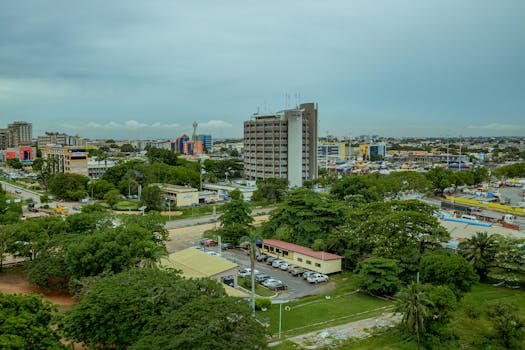
From Scarcity to Connectivity: The Rise of Telecom Infrastructure in Africa
Introduction
From Scarcity to Connectivity: The Rise of Telecom Infrastructure in Africa has been a remarkable journey, marked by significant investments and innovations in the sector. The African continent, once plagued by a scarcity of telecommunications infrastructure, has witnessed a dramatic transformation in recent years. The proliferation of mobile networks, fiber optic cables, and satellite communications has enabled rapid economic growth, social development, and improved connectivity across the continent.
The rise of telecom infrastructure in Africa has been driven by a combination of factors, including government initiatives, private sector investments, and technological advancements. This article will explore the current state of telecom infrastructure in Africa, the key drivers of growth, and the impact of this growth on the continent’s economy and society.
The Current State of Telecom Infrastructure in Africa
Africa’s telecom infrastructure has undergone significant improvements in recent years, with many countries investing heavily in the development of mobile networks, fiber optic cables, and satellite communications. According to a report by the International Telecommunication Union (ITU), the number of mobile subscriptions in Africa has increased from 16 million in 2000 to over 1 billion in 2020. This represents a penetration rate of over 80%, making Africa one of the fastest-growing mobile markets in the world.
The proliferation of mobile networks has been driven by the introduction of affordable handsets and prepaid services, which have made mobile phones accessible to a large segment of the population. Additionally, the rollout of 3G and 4G networks has enabled faster data speeds, supporting the growth of mobile broadband services and the adoption of digital technologies such as mobile money, e-commerce, and social media.
Furthermore, the deployment of fiber optic cables has improved the quality and reliability of internet services in Africa, enabling faster data speeds and greater connectivity. Many countries have invested in the development of national fiber optic backbone networks, which have improved the connectivity of major cities and towns. Additionally, the arrival of international submarine cables has increased Africa’s connectivity to the global internet, reducing latency and improving the overall quality of internet services.
Key Drivers of Growth
The growth of telecom infrastructure in Africa has been driven by a combination of factors, including government initiatives, private sector investments, and technological advancements. Some of the key drivers of growth include:
The liberalization of the telecom sector, which has encouraged competition and investment in the sector. The introduction of regulatory frameworks, which has provided a stable and predictable environment for investors. The availability of affordable handsets and prepaid services, which has made mobile phones accessible to a large segment of the population. The deployment of fiber optic cables, which has improved the quality and reliability of internet services. The arrival of international submarine cables, which has increased Africa’s connectivity to the global internet.
Impact on the Economy and Society
The growth of telecom infrastructure in Africa has had a significant impact on the continent’s economy and society. Some of the key benefits include:
The creation of jobs and economic opportunities, particularly in the ICT sector. The improvement of access to education and healthcare services, through the use of digital technologies such as e-learning and telemedicine. The increase in financial inclusion, through the use of mobile money and other digital financial services. The improvement of connectivity and communication, which has enabled businesses to operate more efficiently and effectively. The growth of e-commerce and other digital industries, which has created new opportunities for entrepreneurs and small businesses.
Conclusion
In conclusion, the rise of telecom infrastructure in Africa has transformed the continent from a state of scarcity to one of connectivity, enabling rapid economic growth and social development. The growth of mobile networks, fiber optic cables, and satellite communications has improved the quality and reliability of internet services, and has created new opportunities for businesses, entrepreneurs, and individuals. As the telecom sector continues to evolve, it is likely that Africa will remain one of the fastest-growing markets in the world, driven by the increasing demand for digital services and the improving quality of telecom infrastructure.






